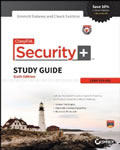Interhack Corp is a Computer Expert Firm that specializes in helping corporations and executives with challenges and opportunities involving the use of information. Interhack's focus is in Information Privacy and Security. The company's Information Assurance practice delivers assessment and reporting services to help firms find and keep the proper balance of risk, utility, and expense.
Interhack's overall mission is to make global computing and communications infrastructures worthy of trust. Their small tactical teams work at peak performance to clearly define the mission, its objectives, and the context in which they operate. Their ultimate product is unassailable opinion, delivered artfully.
Interhack's Internet Privacy Project (see link above) looked at the Internet infrastructure and how real systems used for online banking, navigation, advertising, and even enhanced DVD and CD content put unsuspecting consumers at risk. Results of this work were reported in the media worldwide and have served as foundation material for discussion in computer science programs throughout the United States and Europe.
Interhack's Cybersecurity Practice helps you to defend your organization.
Cybersecurity is a diverse topic, including data breaches, compliance violations, and corporate espionage. Security failures can undermine confidence in a brand and can result in catastrophic losses through changes in customer behavior, canceled contracts, and stolen trade secrets.
The Interhack system of Cybersecurity Services has six parts.
Vulnerability Assessment - will show you where your systems are vulnerable, and how your systems are impacted by those vulnerabilities.
Penetration Testing - shows you how well your organization detects and responds to active attacks by having our team of experts conduct controlled attacks you authorize.
Information Security Assessment - shows you how well your organization addresses information security, as seen through the prism of relevant industry standards.
Application Security Evaluation - shows you how your security concerns have been identified and are managed through system design and implementation.
Network Traffic Assessment - shows you what is actually on your network, and helps you verify that you have only what you think you have.
Criticality Assessment - provides you a view of your organization's most mission-critical information, where it can be found, and how the organization is impacted by a loss of confidentiality, integrity, and availability.
View Mr. Curtin's Expert Witness Profile.
Matthew Curtin
This book is the story of the formation of the world's most widely-used system to protect sensitive information and how a group of independent cryptographers, civil libertarians, and hobbyists managed to demonstrate the system's weakness in June of 1997, even as the U.S. Congress debated the government's control over cryptography. As one of the coordinators of the DESCHALL project that broke a secret message encrypted with what was then the government standard, Curtin presents a unique insider view of how the project came together and what happened behind the scenes to demonstrate the weakness of the standard and ultimately to usher in the age of unrestricted cryptography.
Matthew Curtin, Peter G. Neumann
Suitable for the IP manager or developer seeking to improve Web privacy and security, is an indispensable resource for system administrators and application developers, providing a means to understand, create, and maintain secure Internet systems.













 Tony Mason has 42 years of experience in Software Development, mostly consulting with companies to find novel and useful ways to build new or improve existing products. He has extensive experience in providing "knowledge transfer" activities, such as clearly written documents and focused education.
Tony Mason has 42 years of experience in Software Development, mostly consulting with companies to find novel and useful ways to build new or improve existing products. He has extensive experience in providing "knowledge transfer" activities, such as clearly written documents and focused education. 

